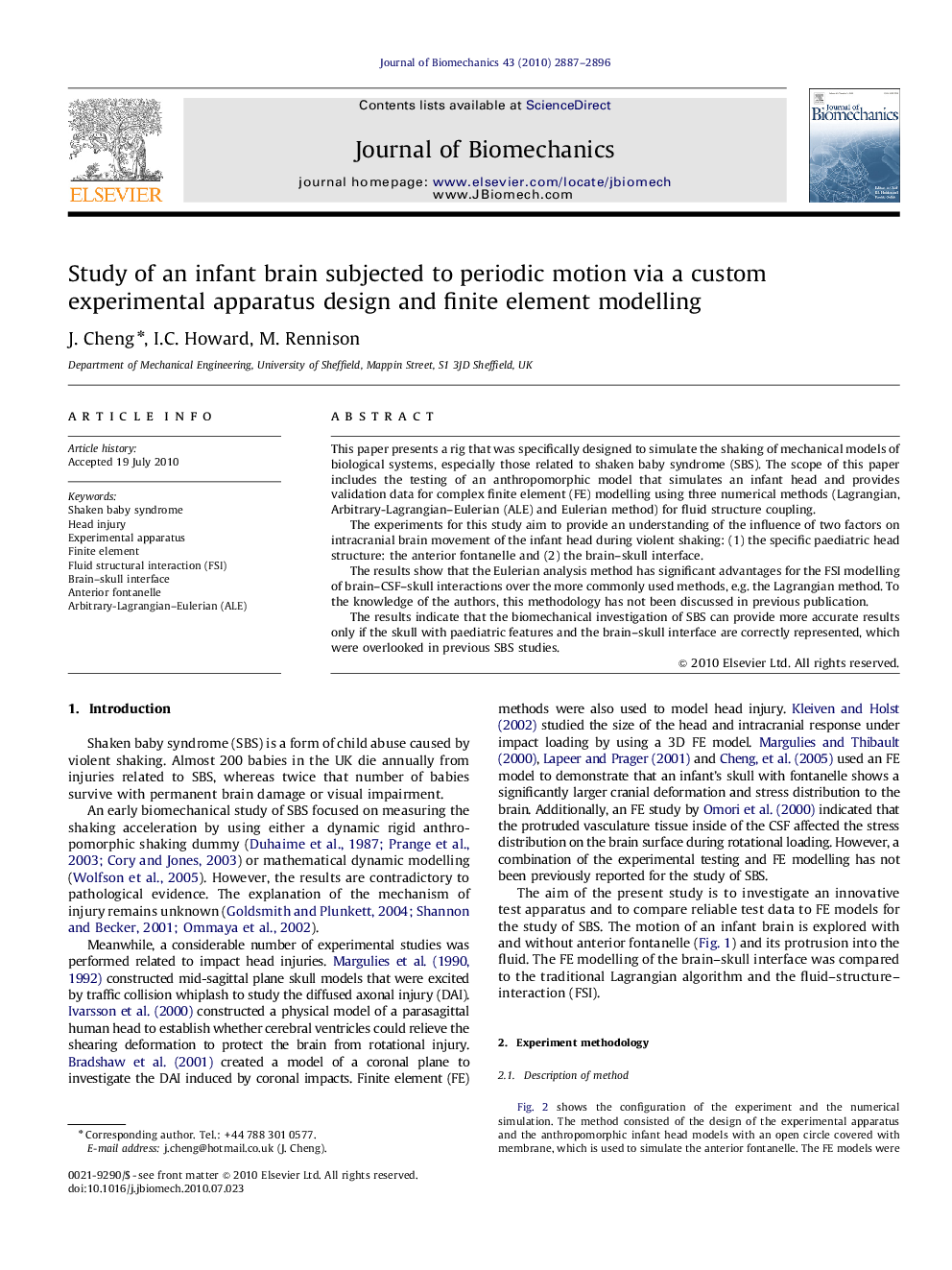| Article ID | Journal | Published Year | Pages | File Type |
|---|---|---|---|---|
| 872458 | Journal of Biomechanics | 2010 | 10 Pages |
This paper presents a rig that was specifically designed to simulate the shaking of mechanical models of biological systems, especially those related to shaken baby syndrome (SBS). The scope of this paper includes the testing of an anthropomorphic model that simulates an infant head and provides validation data for complex finite element (FE) modelling using three numerical methods (Lagrangian, Arbitrary-Lagrangian–Eulerian (ALE) and Eulerian method) for fluid structure coupling.The experiments for this study aim to provide an understanding of the influence of two factors on intracranial brain movement of the infant head during violent shaking: (1) the specific paediatric head structure: the anterior fontanelle and (2) the brain–skull interface.The results show that the Eulerian analysis method has significant advantages for the FSI modelling of brain–CSF–skull interactions over the more commonly used methods, e.g. the Lagrangian method. To the knowledge of the authors, this methodology has not been discussed in previous publication.The results indicate that the biomechanical investigation of SBS can provide more accurate results only if the skull with paediatric features and the brain–skull interface are correctly represented, which were overlooked in previous SBS studies.
